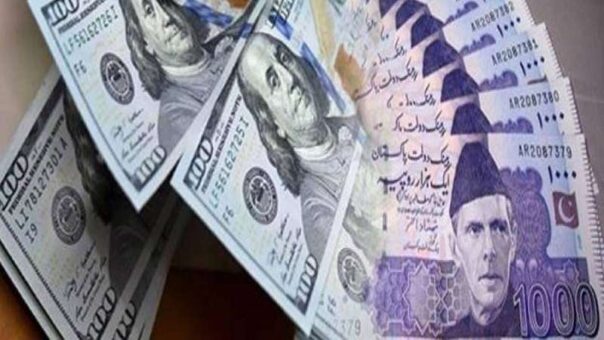Karachi, May 22, 2024 – The Pakistani Rupee experienced its third consecutive day of decline against the US dollar on Wednesday, closing at PKR 278.47 in the interbank foreign exchange market.
This latest movement saw the rupee slipping from its previous close of PKR 278.39, marking an eight-paisa loss.
The local currency had traded at PKR 278.21 to the dollar on May 17, 2024, initiating a downward trend over the past three sessions. Despite this consistent depreciation, analysts pointed out that the drop is relatively marginal, influenced primarily by import and corporate payment pressures.
Currency analysts remarked that the rupee’s nominal depreciation against the greenback is not alarming in the broader economic context. They highlighted a generally positive outlook for the rupee, underpinned by several key economic indicators.
One of the primary factors bolstering this optimism is Pakistan’s current account surplus for April 2024. The surplus, indicative of the country exporting more goods and services than it imported, reflects improved economic fundamentals and boosts market confidence. This surplus suggests that Pakistan’s economy is currently generating sufficient foreign exchange through its exports to cover its import bill, a positive sign for the currency’s stability.
In addition, Pakistan’s foreign exchange reserves have witnessed a significant rise. According to the State Bank of Pakistan (SBP), the reserves have increased to a comfortable level, enhancing the country’s capacity to manage external economic shocks and meet international payment obligations. This rise in reserves is a critical buffer that provides confidence to investors and supports the rupee.
Another supportive factor is the ongoing dialogue with the International Monetary Fund (IMF) concerning a new loan program. These discussions aim to secure financial assistance to support Pakistan’s economic reforms and stabilization efforts. Positive developments in these negotiations have further bolstered investor confidence, helping to mitigate downward pressure on the rupee.
Market participants and currency traders remain cautiously optimistic about the rupee’s near-term performance. They believe that if the trends of rising foreign exchange reserves and a consistent current account surplus continue, the rupee could stabilize or even appreciate slightly in the coming weeks.
However, analysts also caution that external factors could influence the rupee’s value. Notably, fluctuations in global oil prices and geopolitical developments could have significant impacts. Given Pakistan’s reliance on imported oil, changes in international oil prices can substantially affect the country’s trade balance and foreign exchange reserves, thereby influencing the rupee’s stability.
In summary, while the Pakistani Rupee has experienced a minor depreciation against the US dollar, the overall market sentiment remains positive. The combination of a current account surplus, increasing foreign exchange reserves, and positive IMF discussions suggests a stable outlook for the rupee in the near future.
